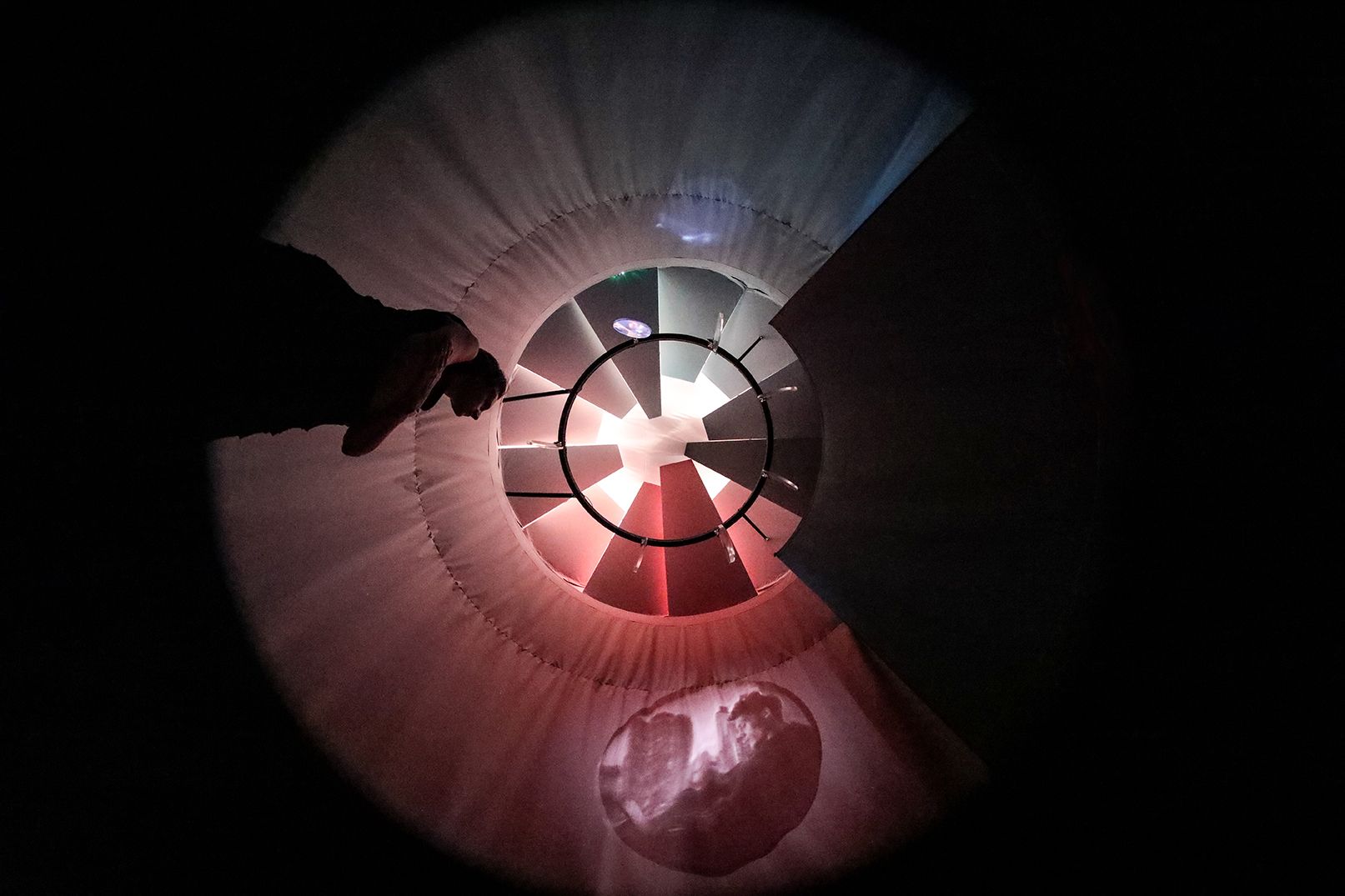EPFL, Foyer SG
Within the framework of the exhibition Lighten Up! On Biology and Time, EPFL Pavilions presents a full-day free symposium on Friday 24 March gathering participating artists together with chronobiologists and sleep experts. This event will provide novel insights into the installations and illuminating discussions across disciplines.
All life on earth has evolved within the solar framework of day and night. This ubiquitous environmental light-dark cycle has been internalised into molecular clocks that predict the appropriate time of day behaviour. Whether cyanobacteria floating in a pond, crabs following the tides, rodents burrowing in the day and emerging at night, sheep lambing in spring, birds migrating to the warm south – circadian, lunar, and seasonal rhythms impact physiology, reproduction, and survival. It is the same in humans. However, in our 24/7 society, the natural day-night cycle has been obscured by indoor living and working under artificial lighting, with long-term consequences for health and well-being. The tenets of chronobiology are explored by artists in multiple ways to light up our crucial dependence on daily cycles, and we invite everyone not to lose this innate connection to nature.
- Speakers
Bharath Ananthasubramaniam | Marilyne Andersen | Siegrun Appelt | Kirell Benzi | Alan Bogana | Christian Cajochen | James Carpenter | Rafael Gil Cordeiro | Colin Fournier | Ted Hunt | Sarah Kenderdine | Elizabeth Klerman | Liliane Lijn | Robin Meier Wiratunga | Susan Morris | Anne Noble | Anna Ridler | Till Roenneberg | Helga Schmid | Francesca Siclari
Themes
- Brightness
Outside in: Cyclic light and dark regulate all aspects of behaviour (Christian Cajochen). Why does our circadian clock require light every morning? How can light treat winter depression and sleep disorders? The artists will explain how plants flower at certain times of day (Anna Ridler), or how bees navigate with the sun (Anne Noble); they will highlight why it is so important that buildings let in as much daylight as possible (James Carpenter) and why society needs to rethink its relationship with light (Siegrun Appelt). How did sensitivity to light evolve and shape ancestral organisms (Alan Bogana)? More abstractly, how does the way we view time influence how we occupy time (Ted Hunt)? What do the mathematics of rhythms tell us (Bharath Ananthasubramaniam)? And what beauty evolves out of playful synchronisation of fireflies with light (Robin Meier)?
- Darkness
Inside out: Our body rhythms are endogenous, they continue to tick with a near-24-hour rhythm when isolated from time cues. The most obvious rhythm we know is the sleep-wake cycle, regulated by two processes, the circadian clock that determines timing and structure, and sleep pressure that builds up during wakefulness and declines during sleep (Elizabeth Klerman). What does a night’s sleep look like when transformed into a 3D sculpture (Rafael Gil Cordeiro)? Three artists visualise the circadian sleep-wake cycle: documented as a light box or steel column (the late Andreas Horlitz), as tapestries (Susan Morris), or as novel data-driven simulations (Kirell Benzi). We enter the night: the layers of sleep stages and the mysteries of dreams (Francesca Siclari), and are confronted with a trio of dreaming heads and waking brains (Liliane Lijn).
- It's About Time
In a round table format, four participants discuss the experience of time. Beginning with the concepts of chronobiology and entrainment of the circadian clock by light (Till Roenneberg), an artist considers a temporal, fluid Utopia, consciously experimenting with subjective time (Helga Schmid). How do we experience day and night in the density of the built cityscape (Marilyne Andersen)? What would we gain in quality of life if our house was designed for sunlight falling every hour into a different room, following our daily pattern of activities (Colin Fournier)?
